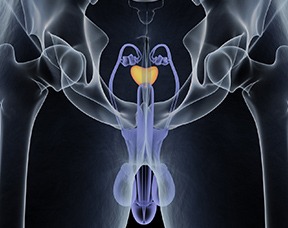(PRWEB) JULY 25, 2017
A study published in the journal Radiology found using magnetic resonance imaging (MRI) guided strategies in the detection of prostate cancer are cost-effective when compared with the standard biopsy strategy in a decision-analysis model.
“Currently, the standard for detecting prostate cancer is a systematic transrectal ultrasonography guided biopsy if there are suspicions from findings of a digital rectal exam or from a blood sample to test a man’s prostate-specific antigen or PSA,” said Dr. David Samadi. “This procedure uses a needle to collect about 12-16 cores of the prostate in predefined locations in men with elevated blood PSA levels or an abnormal digital rectal exam. However, about 30% of cancers are found outside of this area. This means that even if the biopsy is negative for finding cancer, there is still the possibility that this biopsy may have missed pockets of undetected tissue.”
Both MRI and MRI-guided biopsy techniques are highly sensitive and specific in detecting clinically significant prostate cancer. The reluctance in using these techniques into practice guidelines for prostate cancer detection is the belief they are too costly to use. Researchers wanted to evaluate the cost-effectiveness of multiparametric diagnostic MRI examination followed by MRI-guided biopsy strategies for the detection of prostate cancer in biopsy-naïve men who were suspected of having prostate cancer for the first time.
For the study, the researchers created a decision-analysis model for biopsy-naïve men who had been recommended for prostate biopsy either for an abnormal digital rectal exam or an elevated PSA level. The men were divided into groups by ages: 41-50 years; 51-60 years; and 61-70 years. There were three major strategies researchers were evaluating:
- Standard transrectal US-guided biopsy
- Diagnostic MRI followed by MRI-targeted biopsy, with no biopsy performed if MRI findings were negative
- Diagnostic MRI followed by MRI-targeted biopsy, with a standard biopsy performed when MRI findings were negative
“What the researchers found was that noncontrast MRI followed by cognitively-guided MR biopsy was the most cost-effective approach, yielding an additional net health benefit of 0.198 quality-adjusted life year compared with the standard biopsy approach,” stated Dr. Samadi. “If the MRI findings were negative, then there was no standard biopsy done.”
“The advantage of using MRI is that it gives me as a physician a more accurate and precise identification of any suspicious lesions which may not have been found using traditional US-guided biopsy,” explained Dr. Samadi. “Many practices look at prostate cancer considering it to be a common cancer found in men and that using MRI is too cost-prohibitive. However, this study proves that performing MRI before a biopsy and then going from there using whatever the information is telling us, would be a smarter strategy in providing the best healthcare and health benefits for our patients in a cost effective manner.”
Patients newly diagnosed with prostate cancer can contact world renowned prostate cancer surgeon and urologic oncologist, Dr. David Samadi, for a free phone consultation and to learn more about prostate cancer risk, call 212-365-5000.


